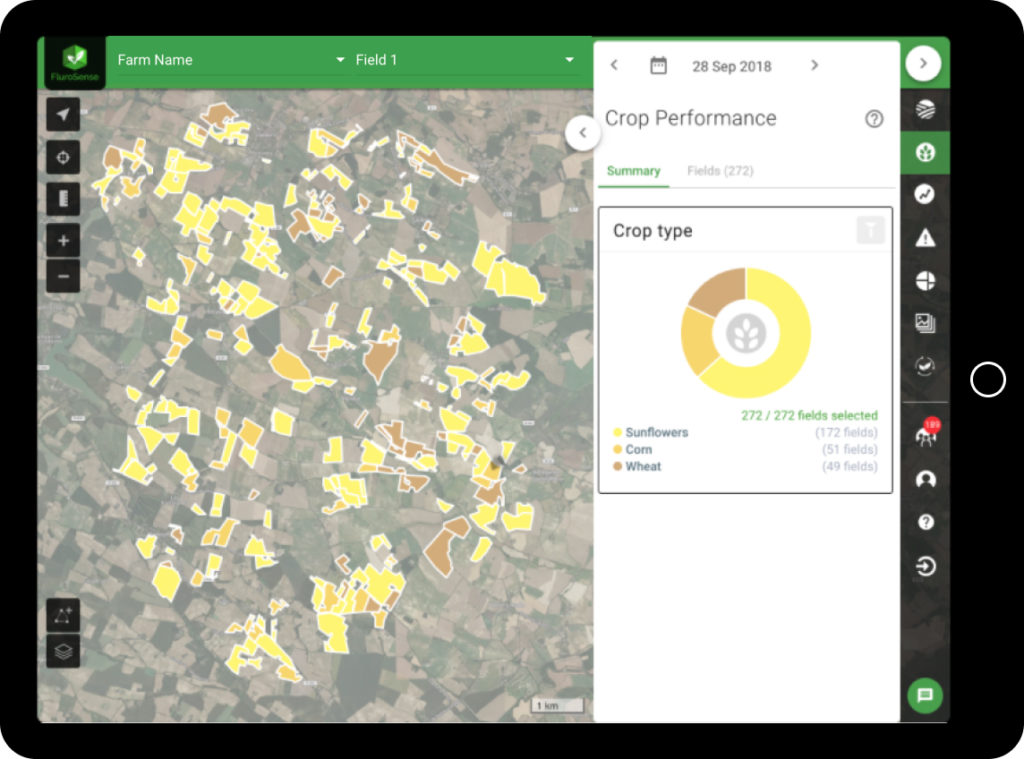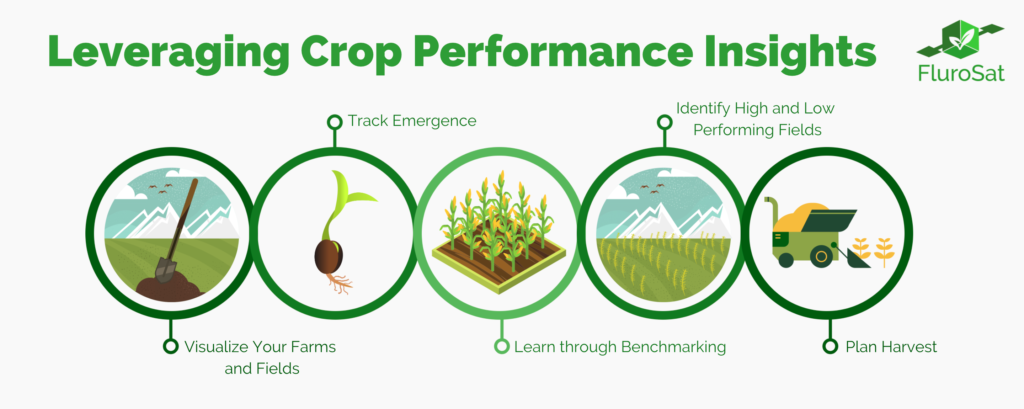Agriculture During the Pandemic
Agronomists from agricultural cooperatives and retailers, usually visit fields to advise farmers in crop management. However, COVID-19 related travel restrictions have disrupted these practices, putting at risk the advisory services vital for farmers to stay productive.
Precision farming can overcome this dilemma, but not all providers are equal.
Find out how you can close communication gaps, make your crop advisory services more competitive, and increase communication with your customers by adopting the right kind of precision ag provider.
1. Communicate Remotely with Digital Ag
In a survey of 283 growers and professionals conducted by FluroSat in spring 2020 at the beginning of COVID19 outbreak in the US, 31% of respondents cited changing from in-person to remote communication as the number one worry.
FluroSat overcomes this problem of lack of shared context and challenges with communication, by sending both agronomists and growers weekly email reports with crop statuses, growth stages, and field ranking, so they can discuss how the season is going and decide on the best course of action by looking at the same information.
To produce weekly crop performance reports FluroSense uses satellite imagery, field and weather data, and analyzes them using agronomic and AI models translating “pretty pictures” into crop progress metrics and actionable insights customized for a farm and crop.
The field images, tables and statistics in the reports, aid crop advisors in communicating effectively, and maintaining a virtual record of crop progress.
Precision Ag managers at cooperatives often operate across the entire business and prefer to use a Dashboard to group fields by grower, crop, hybrid, or growth stage, providing their cooperative with visibility over all the farms, which can be monitored efficiently throughout the season, without requiring additional field visits, see Figure 1.
Our customers are reporting an increase of up to 60% in communication with their growers' thanks to the regularity and usefulness of the crop performance reports.

2. Deliver and Improve Customer Service
About 30% of those surveyed, also found it hard to maintain optimum crop operations during the pandemic.
It is important to provide robust support to growers across all stages in the crop growth cycle. In tightly-knit coop precision ag teams, even a few people going on a sick leave can leave the team stretched thin. In such situations, being able to rely on proven digital technology can be a game changer.
FluroSat’s “Crop Performance Insights” allows cooperatives to monitor and advise farmers in all operations over a season:
- Management zone creation for soil sampling
- Tracking emergence and crop cover across all growth stages
- Identifying crop stress risks and their severity
- Estimating harvest timing, yield and its variability
With the use of multispectral data and crop type-specific agronomic models, FluroSense can “see” the occurrence of crop stress before it can be seen with the naked eye. Thus, agronomists can use the weekly insights, to alert growers to risks and problems proactively, long before they are visible in the field, and hence before they have significantly impacted the yield. Using the insights early in the season, agronomists can also make variable rate application (VRA) nitrogen recommendations, by proactively balancing the yield goals with the need to optimize growers' input costs.

Organizations can improve their customer service and support they provide, as FluroSat insights are precise, objective, more frequent, timely, and easy to understand. Moreover, using a consistent source of agronomic insights about the fields, the cooperative will be providing more consistent customer services regarding the training of its individual team members. FluroSat builds transparency as the FluroSense reports are usually shared with both crop advisors and the growers. Precision farming can make cooperatives and retailers, reliable partners of growers, and increase their ROI, even in difficult times like the pandemic.
Several retail customers of FluroSat have noted that one of the main successes for them has been enabling more of their team members to be comfortable offering all precision ag services supported by the cooperative, which they were not comfortable doing before, without the additional frequent crop insights and recommendations.
3. Ensure Timely Input and Labor Supply
FluroSat’s early actionable insights, and regional estimates of crop development provide crop advisors an easy method, to calculate and prescribe the exact amount of fertilizer or chemical input required. Crop advisers can consolidate requirement data from all farms, and give retailers and cooperatives advance estimates of inputs to procure, to ensure timely distribution to growers.
Agronomists can also advise operations at various stages. For example, by tracking crop development stages, and seeing senescence being identified by FluroSense, they can estimate optimal harvest times for each of their grower’s fields. Such objective estimate of the rate at which the crop is drying down gives crop advisors and farmers enough time to organise the harvest operations and harvest crops in an optimal time, saving on labour and fuel costs.

4. Learning from Benchmarking
The overview of all crops and fields that the FluroSat dashboard gives crop advisors, is useful in benchmarking varieties suitable for a region.
This kind of insight is impossible for an individual farmer to obtain even if they used precision farming. Cooperative and retailers can thus leverage the collective data and information to provide growers additional insight. Using the post-season report, crop advisors and growers can see how their fields and hybrids performed and brainstorm strategies and remedial measures, identify systematic problems that need proactive action, by classifying fields according to yield, see Figure 3.

5. Building Customer Base
Many farmers have heard of precision farming, but have found it intimidating to apply. Cooperatives and retailers can assist growers in adopting digital farming by providing expertise and support. This would help them earn the trust and loyalty of growers and ultimately expand their customer base.
Often one of the roadblocks that cooperatives face, when they wish to grow their territory, is that individual members of the precision ag or sales team are operating at their capacity, and without growing the team, it seems not possible to scale.
With automated large scale crop monitoring, digital email reports, and alerts, the precision ag and sales team at ag cooperatives and retailers can service more customers without being strained. By preferring digital insights to physical visits, and leveraging the power of technology, crop advisors can communicate more frequently with a larger number of growers supporting the growth of the territory for their cooperative or retail organization.



